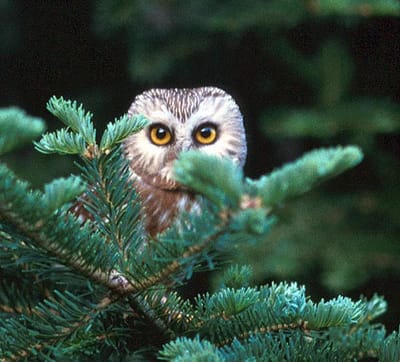Human Impacts
"Since the 1850s, the mean annual temperature in the boreal region of Canada
has risen by 0,5°C to 3°C, with increases greater than 2°C West of the Manitoba-Ontario border. The Intergovernmental Panel on Climate Change recently published its fifth assessment report, and it concluded that increases of 2°C in mean annual temperature by 2050 are highly probable, and mean annual temperatures across the Canadian boreal forest zone could be 4-5°C warmer by 2100", says Mark Johnston, Canadian forest scientist. As the global warming trend continues, the boreal forest is not left untouched. Rising temperatures will have lasting effects on it.
Within Canada, for example, warmer temperatures and changes to the distribution of annual precipitation will cause highly damaging droughts in some areas. Furthermore, large wildfires are expected to rise in number. Of course the burning of the forest itself releases CO2, perpetuating the problem. Another threat is the outbreak of forest insects. A relatively small temperature change can cause a population to explode if it moves further towards the optimum range of the species. In British Columbia, the Mountain Pine Beetle has already caused considerable damage to trees, and will probably spread eastwards in the next decades. It is also highly important to note that about 40% of the Canadian boreal forest and many taiga ecosystems across the globe are underlain by a permafrost. In many areas, this is melting and degrading irreversibly. This means that, for several decades, a repeated process of forest decline and re-establishment will occur as flora is forced to adapt to the lack of permafrost and soft, wet grounds. This process also releases significant amounts of CO2 and methane, only amplifying the greenhouse gas problem at the root of global warming.
Other pressures are human developments destructive to habitats of native plants and animals. Urban expansion, building of roads and infrastructure, the timber industry, the killing of predators to protect humans' livestock and the exploitation of minerals are some examples of practices threatening biodiversity on smaller scales. A key controversy in Canada's boreal regions is the mining of tar or oil sands. Hectares of forest must be cut down and waste products pollute land and water.
In many areas of Canada, bitumen can be found in so called tar sands. These are mined and the bitumen is processed to produce oil. Tar sands can be extracted in two ways; surface mining or well extraction. In surface mining, all trees and soil are removed to reveal oil sand deposits. The alternative method means drilling wells to reach bitumen soaked sand deposits. Both are highly damaging to surrounding ecosystems, usually taiga forest. Tar sands make up 40% of Canada’s oil production, and 20% of the USA’s annual oil consumed stems from Canadian sources. This goes to show how ingrained environmentally damaging industries are in our economy and lives.
Another important industry of Canada's which has contributed to deforestation is the timber industry, but this is now jeopardised by rising temperatures.
As temperatures rise many tree species migrate further and further north to find suitable growing conditions, although at a slower pace than climate change. Increased transformations of forests to grass or shrub lands may occur, especially under increased drought conditions. The aforementioned fire and insect outbreaks will further limit the amount of harvestable material. Climate change favours pioneer species, so hardier species which can be the first to colonize previously biodiverse, but then damaged or disrupted ecosystems. Examples are pinus and populus trees. Although climax species such as picea or abies trees may decline, this opens up opportunities for the timber industry to make use of trees such as the populus.
Altogether, it is important to remember that, as scientist Susanne Tautenhahn puts it, "boreal forests are some of the largest stores of carbon on the earth", as well as some of our most important photosynthesisers (as the largest biome on earth) and therefore any changes to them will leave a permanent impact on our global climate.

